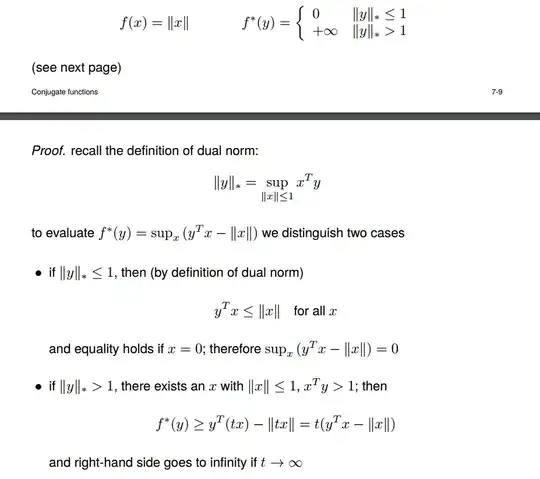How would one find the conjugate of the following : $$f(x) = \|x\|^2 /2$$ The conjugate function is defined as $ f^*(y) = \max_x y^Tx - f(x)$
I am stuck at how I can derive the explicit form for $x$.
So far, here are my steps:
To maximize I take the derivative and set to $0$.
$$f'(x) = y - \partial\|x\| \cdot \|x\| = 0$$
$$\partial\|x\| = y/\|x\| $$
Edit : $\|x\|$ is any norm here. Not just the 2-norm.
Where do I go from here?
